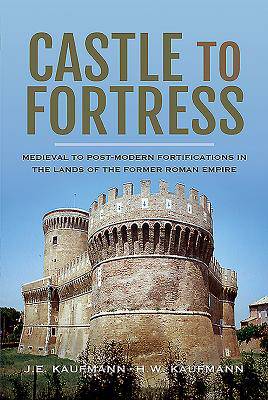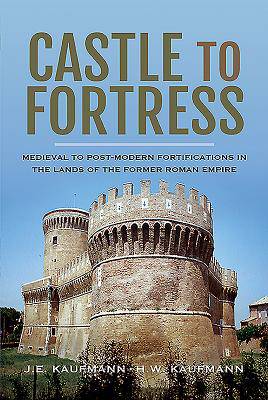
- Afhalen na 1 uur in een winkel met voorraad
- Gratis thuislevering in België vanaf € 30
- Ruim aanbod met 7 miljoen producten
- Afhalen na 1 uur in een winkel met voorraad
- Gratis thuislevering in België vanaf € 30
- Ruim aanbod met 7 miljoen producten
Zoeken
Castle to Fortress
Medieval to Post-Modern Fortifications in the Lands of the Former Roman Empire
J E Kaufmann, H W Kaufmann
Hardcover | Engels
€ 34,95
+ 69 punten
Omschrijving
Across western Europe the long tradition of castle-building took on its most sophisticated form in the later Medieval period and then, in response to the development of gunpowder weapons, it underwent a fundamental change - from castle to fortress. This, the second volume of a highly illustrated new study of medieval fortification, gives a fascinating insight into the last great age of castles and the centuries of violence and conflict they were part of.
It traces the advances made between the twelfth and the fifteenth centuries, looking in particular at the form these fortifications took in contexts as different as Italy, Wales, France and the Iberian peninsula. Many would regard this period in the history of castles as the classic age. It was followed by a phase of relative decline as the conditions of warfare changed and castles had to be adapted to cope with cannon. The conventional castle gave way to new styles of fortification. But, as the authors demonstrate, they were still essential factors in military calculations and campaigns - they were of direct strategic and tactical importance wherever there was an attempt to take or hold territory.
It traces the advances made between the twelfth and the fifteenth centuries, looking in particular at the form these fortifications took in contexts as different as Italy, Wales, France and the Iberian peninsula. Many would regard this period in the history of castles as the classic age. It was followed by a phase of relative decline as the conditions of warfare changed and castles had to be adapted to cope with cannon. The conventional castle gave way to new styles of fortification. But, as the authors demonstrate, they were still essential factors in military calculations and campaigns - they were of direct strategic and tactical importance wherever there was an attempt to take or hold territory.
Specificaties
Betrokkenen
- Auteur(s):
- Uitgeverij:
Inhoud
- Aantal bladzijden:
- 256
- Taal:
- Engels
Eigenschappen
- Productcode (EAN):
- 9781526736871
- Verschijningsdatum:
- 26/07/2019
- Uitvoering:
- Hardcover
- Formaat:
- Genaaid
- Afmetingen:
- 178 mm x 249 mm
- Gewicht:
- 793 g

Alleen bij Standaard Boekhandel
+ 69 punten op je klantenkaart van Standaard Boekhandel
Beoordelingen
We publiceren alleen reviews die voldoen aan de voorwaarden voor reviews. Bekijk onze voorwaarden voor reviews.











